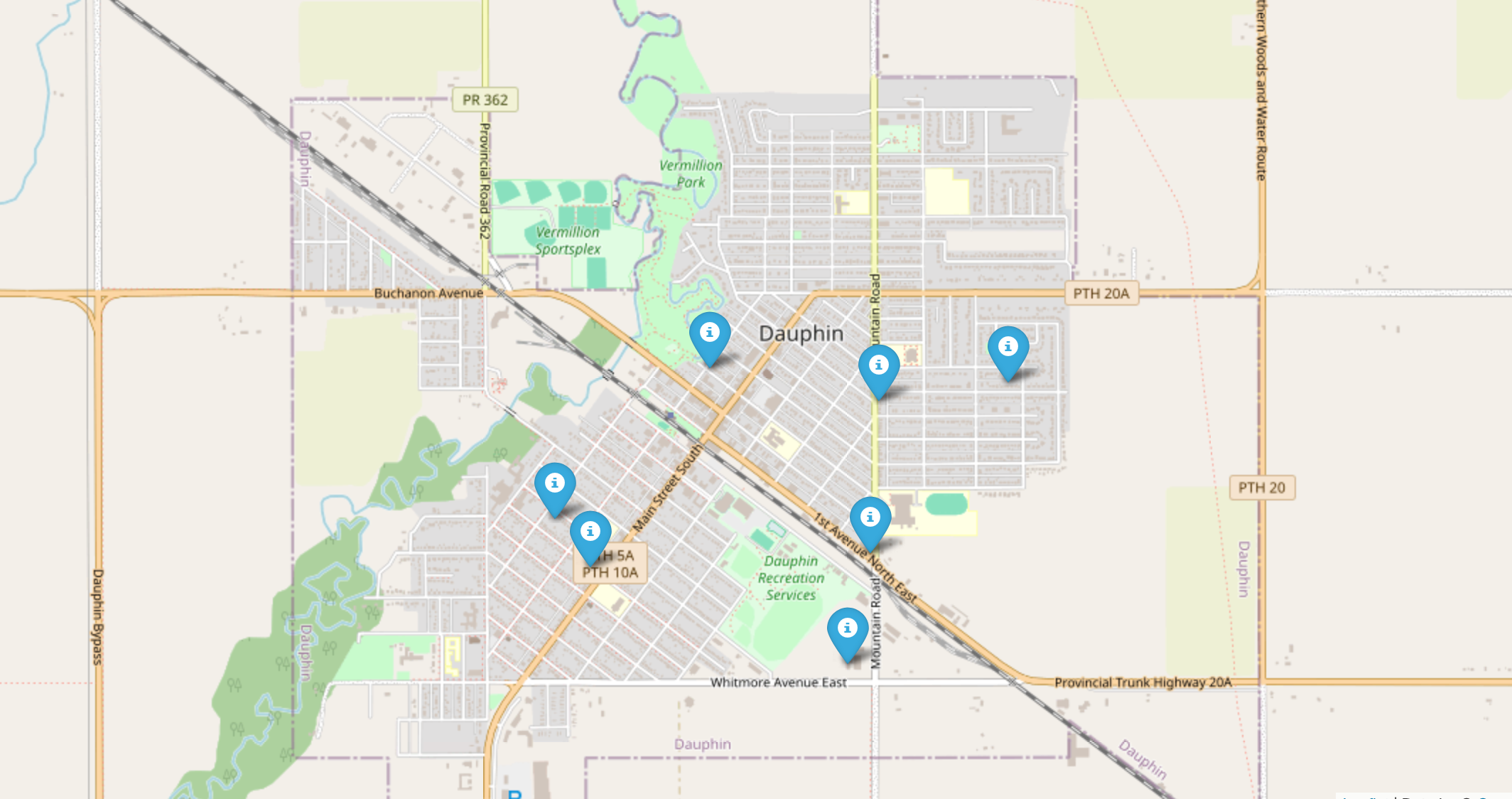In our previous installment, “Paving the Path to Audience Engagement and SEO Success, Pt 1,” we laid the foundation for creating compelling content that captivates your audience and bolsters your search engine rankings.
As we continue our journey, we go deeper into the intricacies of content distribution channels, measurement of success through key performance indicators, and real-world case studies that exemplify the power of effective content marketing strategies. Join us as we build upon the insights from Part 1 and explore how to navigate the challenges and solutions in the ever-evolving landscape of content marketing.
RELATED:
How to Dominate the Canadian Market & Outrank Your Competitors
TLDR
- Content Distribution Channels: The page discusses various platforms for sharing content and emphasizes the importance of selecting the right channels to reach the target audience.
- Measuring Success: It defines key performance indicators (KPIs) and explains how to use analytics to track the effectiveness of content.
- Case Studies: The page presents examples of successful content marketing campaigns and analyzes what made these campaigns effective.
- Challenges and Solutions: Common obstacles in content marketing are identified, along with strategies to overcome these challenges and continue progressing.
Content Distribution Channels
In the digital age, content distribution channels are the lifelines that connect creators with their audiences. The landscape is vast and varied, encompassing everything from social media platforms to podcasts, from email newsletters to sophisticated content management systems. Each channel has its unique strengths and caters to specific audience demographics and behaviors. For instance, while a blog might be an excellent medium for in-depth articles, Instagram could be the ideal platform for visually-driven content.
Understanding the importance of a strong online presence, we specialize in Google Business Profile Management. This service, formerly known as Google My Business (GMB), can make a significant impact on your visibility, especially for businesses that have in-person interactions such as restaurants and local shops. Our expertise ensures that potential customers can find and connect with you easily, whether they’re looking to browse your menu, make bookings, or simply learn more about what you offer. Discover more about how we can enhance your Google Business Profile and drive your online success.
Selecting the right channels is not just about where the content goes, but also about where the audience is most engaged and receptive. It’s a strategic decision that hinges on understanding who the audience is, what they value, and how they consume content. A mismatch between content and channel can lead to wasted effort and missed opportunities. For example, a highly technical whitepaper might not perform well on Instagram, but it could generate significant engagement on a platform like LinkedIn, where professionals seek industry insights.
Moreover, the choice of distribution channels can influence the tone, style, and even the creation of content. A video for YouTube might require a different approach than one for TikTok, even if the underlying message is the same. This is because the norms and expectations of each platform’s audience can vary dramatically.
The importance of selecting the right channels also extends to the allocation of resources. Marketing budgets are not infinite, and investing in the wrong channels can be costly. By targeting the right platforms, businesses can optimize their spending and achieve better ROI. Analytics play a crucial role here, as they provide insights into which channels are performing best and reaching the intended audience effectively.
In conclusion, the art of content distribution is much like being a skilled gardener. Just as a gardener knows which plants will thrive in the shade or the sun, content creators must know which content will flourish on each platform. It’s about planting the right seeds in the right soil to ensure that every piece of content reaches its full potential and blooms splendidly for its intended audience. The digital ecosystem is rich and diverse, and with the right strategy, content can be distributed in a way that not only reaches but resonates with the target audience, fostering engagement and building lasting connections.
Content that remains perpetually relevant, such as search-optimized material that is consistently updated to stay “fresh”, should be prioritized. While trending topics may not have the evergreen status, elements like lists (Top 10 Ways to Save Money), instructional guides, or content that isn’t influenced by current events. Provides information that will continue to be of interest and value over time.
Measuring Success
Measuring success in any business or project is crucial, and it’s often done through Key Performance Indicators (KPIs). KPIs are measurable values that reflect the critical success factors of an organization. Unlike mere metrics, KPIs are intertwined with organizational goals and are indicative of progress in strategic and operational improvement. They can be financial, such as net profit or revenue growth, or non-financial, like customer loyalty and brand strength. To define KPIs effectively, one should adhere to the SMART criteria, ensuring they are Specific, Measurable, Achievable, Relevant, and Time-bound. This approach ensures that KPIs are aligned with the strategic objectives and can be clearly communicated throughout the organization.

When it comes to content effectiveness, analytics play a pivotal role. By using web analytics tools, organizations can track various metrics related to their content, such as page views, bounce rates, and conversion rates.
These metrics can provide insights into how well content is performing and engaging the target audience. For instance, a high number of page views might indicate that the content is popular or well-promoted, while a high bounce rate could suggest that it’s not meeting the needs or expectations of visitors.
Conversion rates, particularly, are a significant indicator of content effectiveness, as they measure the percentage of visitors who take the desired action, such as signing up for a newsletter or making a purchase.
To leverage analytics for tracking content effectiveness, it’s essential to first establish clear goals for what the content is intended to achieve. These goals could range from increasing brand awareness to driving sales. Once the goals are set, specific metrics that align with these goals can be monitored. For example, if the goal is to enhance customer engagement, metrics like time spent on page and social shares might be more relevant than page views alone.
Furthermore, it’s important to use analytics to conduct A/B testing, which can help determine which versions of content perform better in terms of engaging users and prompting conversions. By continually analyzing these metrics, content strategies can be adjusted and optimized for better performance. Additionally, segmenting data can provide deeper insights, such as understanding which pieces of content perform well with different demographics or user groups.
In summary, defining KPIs and using analytics to track content effectiveness are integral to measuring success. KPIs should be SMART and aligned with the organization’s strategic goals, while analytics should be used to monitor relevant metrics and guide content strategy decisions. Through continuous measurement and analysis, organizations can refine their strategies, achieve their objectives, and ultimately, measure their success more accurately.
Case Studies
Content marketing has become a cornerstone of successful brand strategies, with some campaigns standing out for their creativity and impact. For instance, Spotify’s annual Wrapped campaign personalizes user data to create shareable content, effectively turning listeners into brand ambassadors. This campaign leverages the power of personalization and social sharing to increase engagement and brand loyalty. Similarly, Duolingo’s quirky TikTok presence has garnered a massive following by using humor and relatability to boost brand awareness without directly selling its language services. Canva’s Design School is another example, offering valuable design lessons that showcase the platform’s capabilities, thus providing a service while also demonstrating product use.
These campaigns are effective because they understand their audience and create content that resonates on a personal level. They also excel in utilizing the right platforms to reach their target demographic, whether it’s social media for younger audiences or more educational content for those seeking to improve a skill. The success of these campaigns can be attributed to a mix of strategic planning, understanding of consumer behavior, and the ability to tap into current trends.
Analyzing the effectiveness of these campaigns involves looking at key performance indicators (KPIs) such as engagement rates, conversion rates, and overall reach. It’s about understanding the data behind user interactions and how they translate into business outcomes. Campaign effectiveness analysis goes beyond mere numbers; it’s about interpreting data to gain insights into consumer behavior and preferences, which can then inform future marketing strategies.

In essence, the most successful content marketing campaigns are those that deliver value to the audience, whether through entertainment, education, or emotional connection, while also aligning with the brand’s goals and identity. They are multi-faceted, data-informed, and agile, capable of evolving with consumer trends and feedback. As the digital landscape continues to shift, these case studies serve as blueprints for innovative and impactful content marketing.
Challenges and Solutions
Content marketing is a dynamic field that presents a myriad of challenges, but with the right strategies, these obstacles can be transformed into stepping stones for success. One common hurdle is creating high-quality content consistently, which is essential for establishing thought leadership and engaging audiences. To overcome this, businesses can develop a clear content strategy, ensuring that content creation is prioritized and communicated effectively to all stakeholders. Another obstacle is finding writers with the right expertise, as industry knowledge is crucial for producing authentic content that resonates with the target audience. Companies can address this by hiring experienced in-house writers or collaborating with specialized content marketing agencies that provide pre-vetted freelance writers.
Understanding different buyer personas and aligning content with the buyer journey are also critical for effective content marketing. This requires a deep dive into customer needs and preferences, and the creation of content that caters to various stages of the buyer journey. Measuring content ROI accurately is another challenge, but it can be managed by setting clear goals and using analytics to track performance. Additionally, producing content in suitable formats that appeal to the target audience, and activating content effectively across the right channels, are vital for maximizing reach and engagement.
To keep progressing, content marketers must stay abreast of the latest trends and technologies, such as the rise of generative AI, which has introduced both opportunities and challenges in terms of content originality and quality. Embracing these innovations and adapting strategies accordingly can help businesses stay competitive and relevant.
Ultimately, the key to overcoming content marketing challenges lies in a proactive approach, continuous learning, and the willingness to pivot strategies in response to the ever-evolving digital landscape. By doing so, businesses can not only navigate through the challenges but also harness them to fuel their growth and success in the realm of content marketing.







